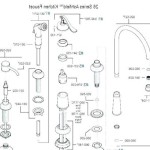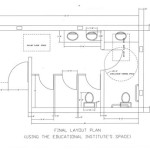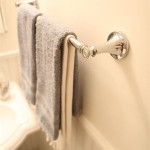Replacing Bathroom Faucet Pop-Up Drain Valves: A Comprehensive Guide
The pop-up drain valve in a bathroom faucet is a seemingly small component, yet its proper function is crucial for efficient water drainage and preventing unwanted leaks. Over time, these valves can corrode, accumulate debris, or break, leading to slow draining, unpleasant odors, and potential water damage. Replacing a faulty pop-up drain valve is a common DIY plumbing project that, with the right tools and knowledge, can save homeowners the cost of hiring a professional plumber. This article will provide a detailed guide on identifying issues with pop-up drain valves, selecting the appropriate replacement, and performing the replacement procedure.
Identifying Problems with Your Pop-Up Drain Valve
Several signs indicate that a pop-up drain valve needs replacing. Slow drainage is perhaps the most common indicator. If water takes an abnormally long time to drain from the sink, even after cleaning the drain stopper and trap, the valve mechanism might be obstructed or corroded. Another sign is a persistent unpleasant odor emanating from the drain. This can be caused by trapped debris and bacteria accumulating within the valve assembly. Visible corrosion on the drain flange or the connecting linkages is another clear sign of deterioration. Finally, if the pop-up stopper fails to seal properly, allowing water to slowly leak out of the sink, or if the stopper doesn't raise or lower as intended, the valve mechanism is likely malfunctioning and requires replacement.
Before concluding that the entire valve needs replacing, it's essential to rule out simpler issues. Sometimes, a clogged drain stopper or a buildup of hair and soap scum in the drainpipe is the culprit. Cleaning the stopper and flushing the drainpipe with hot water and a drain cleaner might resolve the problem. However, if the issue persists after these steps, replacing the pop-up drain valve is the appropriate course of action.
Selecting the Correct Replacement Pop-Up Drain Valve
Choosing the right replacement pop-up drain valve is crucial for a successful repair. Several factors need to be considered, including the faucet type, sink material, and desired finish. The most common type of pop-up drain valve is the standard lift-rod style, which uses a lever located behind the faucet to raise and lower the drain stopper. Other types include push-button drains, where pushing down on the stopper activates the opening and closing mechanism, and touch-activated drains, which use a touch-sensitive sensor. It is imperative to select a replacement that matches the faucet's original design to ensure compatibility with the existing lift rod and control mechanism.
Sink material also plays a role in selecting the appropriate drain valve. For porcelain or ceramic sinks, a drain valve with a rubber gasket is necessary to create a watertight seal. For metal sinks, a drain valve with a metal-to-metal seal might be sufficient. The drain flange, which is the visible part of the drain in the sink, should also match the sink material and finish. Chrome, brushed nickel, and oil-rubbed bronze are common finishes. Selecting a finish that complements the faucet and other bathroom fixtures will maintain a cohesive aesthetic.
Furthermore, consider the drainpipe size when purchasing a replacement valve. Most bathroom sinks have a standard 1 1/4-inch drainpipe, but it is always a good idea to measure the existing drainpipe to ensure compatibility. Some replacement valves come with adapters to accommodate different pipe sizes. Finally, opt for a high-quality drain valve made from durable materials such as brass or stainless steel. These materials are resistant to corrosion and will provide a longer lifespan compared to cheaper plastic alternatives.
Step-by-Step Guide to Replacing the Pop-Up Drain Valve
Replacing a bathroom faucet pop-up drain valve involves several steps, from preparation to installation and testing. Safety is paramount, so turning off the water supply to the faucet is the first step. Locate the shut-off valves under the sink, usually one for hot water and one for cold water. Turn both valves clockwise until they are fully closed. Place a bucket under the sink to catch any remaining water in the pipes.
Next, disconnect the existing drain assembly. Start by loosening the nut that connects the drain tailpiece (the vertical pipe extending down from the drain) to the P-trap (the curved pipe that traps debris). Use a wrench or pliers to loosen the nut and carefully separate the tailpiece from the P-trap. Then, disconnect the lift rod from the drain stopper mechanism. This usually involves unscrewing a small screw or clip that holds the rod in place. Once the lift rod is disconnected, loosen the nut that secures the drain flange to the sink. This nut is located underneath the sink, directly below the drain opening. Use a basin wrench, if necessary, to reach the nut. Once the nut is loose, carefully remove the old drain assembly from the sink. Clean the sink drain opening thoroughly to remove any old sealant or debris.
Now, prepare the new drain valve for installation. Apply plumber's putty to the underside of the new drain flange. Roll the putty into a rope-like shape and press it evenly around the flange's edge. This will create a watertight seal between the flange and the sink. Insert the new drain flange into the sink drain opening from above. From underneath the sink, slide the rubber gasket and mounting hardware onto the drain tailpiece. Tighten the nut that secures the drain flange to the sink. Ensure the flange is properly aligned and the nut is snug, but avoid overtightening, which could damage the sink.
Connect the drain tailpiece to the P-trap, tightening the nut securely. Reconnect the lift rod to the drain stopper mechanism, ensuring it is properly aligned and the stopper moves freely up and down. Turn on the water supply and check for leaks around the drain flange and tailpiece connections. If any leaks are detected, tighten the nuts slightly or reapply plumber's putty if necessary. Test the pop-up drain to ensure it opens and closes smoothly and seals properly. Fill the sink with water and check for any leaks around the drain stopper. If the drain works correctly and there are no leaks, the replacement is complete.

How To Install A Bathroom Sink Drain With Faucet Macy Bath Co Ltd

How To Replace Or Maintain A Sink Pop Up Drain Assembly

How To Replace A Pop Up Sink Drain Remove The Old Bathroom Stopper Repair

How To Replace A Pop Up Drain Assembly Bathroom Sink

My Pop Up Drain Is Not Draining Water

How To Replace Bathroom Sink Stopper Avg Cost 25 65 1 2hrs

How To Fix A Bathroom Sink Drain Stopper 4 Easy Solutions

How To Replace A Sink Stopper Quick And Simple Home Repair

Bianchina Swapping Out A Bathroom Sink Drain And Pop Up
Install A Drain Stopper So The Is Removable
Related Posts







